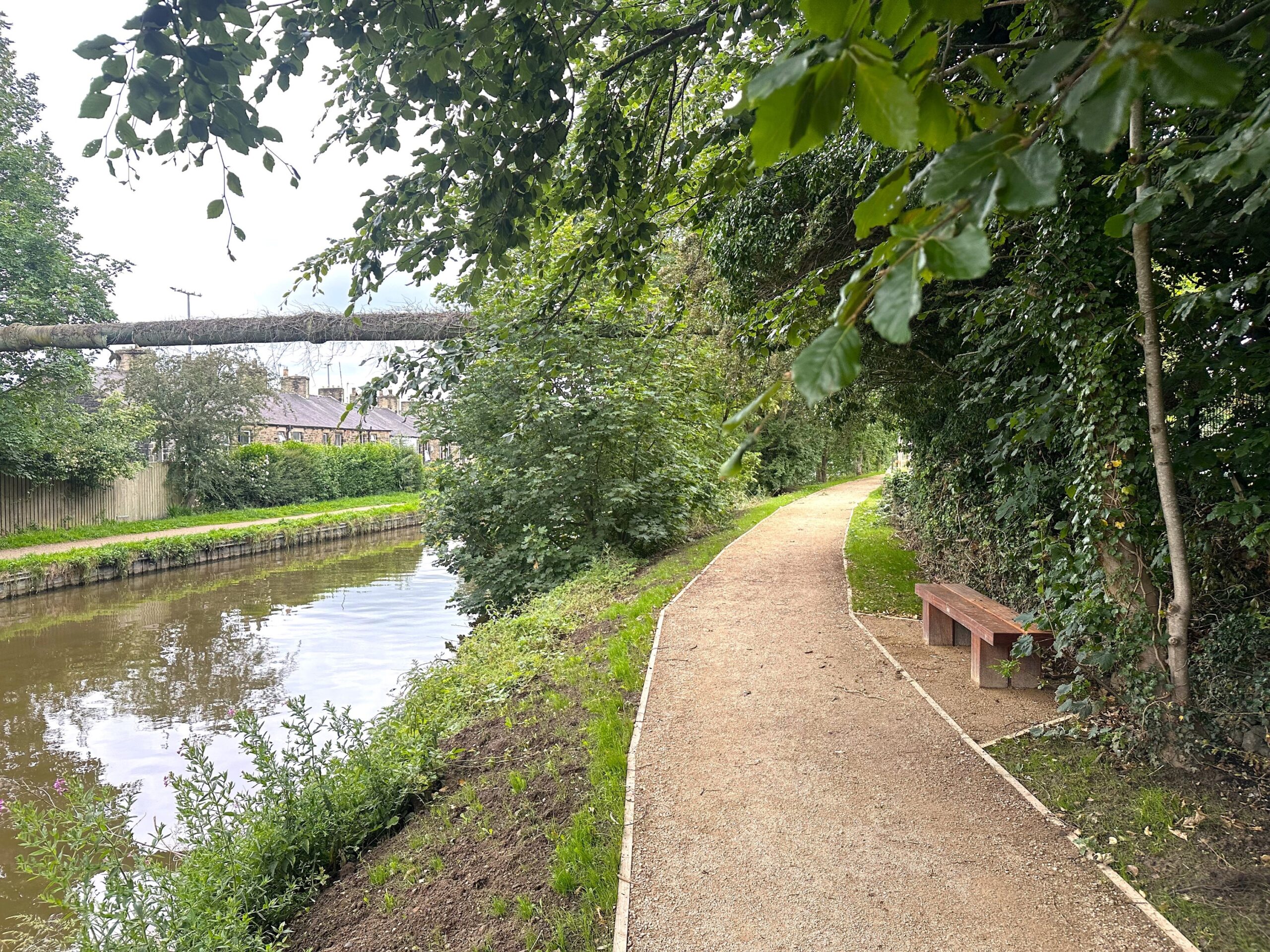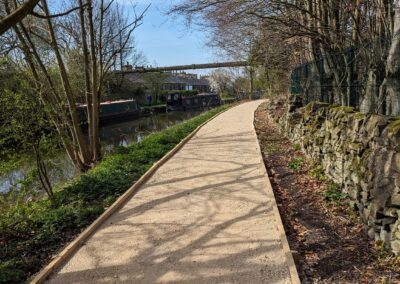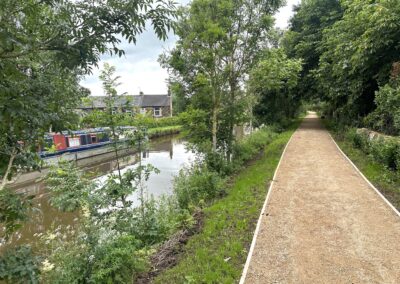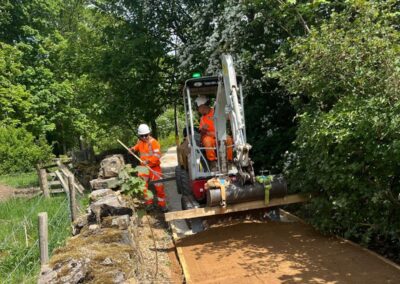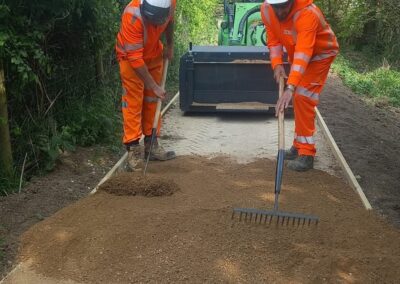As part of a £7.8 million scheme to transform Skipton’s transport infrastructure and significantly improve connections between key travel hubs in the town, the Skipton Gateway project promises to make getting around the town easier and safer.
The scheme includes the upgrading of pedestrian links between the train station, bus station, and nearby Craven College—key spots used every day by residents, students, and visitors.
This initiative is part of a wider £44.6 million investment through the Department for Transport’s Transforming Cities Fund (TCF), aimed at improving access to transport hubs in three North Yorkshire towns: Skipton, Harrogate, and Selby.
The Skipton project stands out as a pivotal development in making local travel more connected, providing an accessible and sustainable alternative to car journeys.
Working closely with Canal River Trust and North Yorkshire Council’s Highway Development Service, NY Highways began work on the first part of the project (scheme 3) relating to the footpaths around the Canal in March 2025 and completed in early-June 2025.
The problem
The footpath along the northern side of the Canal was narrow in places and unsurfaced. In contrast, the footpath along the southern side of the Canal had been upgraded in recent years and has proven very popular.
A decision was made to invest in the footpath to the north of the Canal to provide a route for walking, helping promote active lifestyles while reducing car use.
The solution
The investment in the footpath to the north of the Canal includes:
- Re-surfacing of 1.1km of existing public footpath between Skipton railway station, Craven Auction Mart and College Campus.
- Trimming back of vegetation to ensure minimal encroachment to footpath.
- Providing signage to encourage use of this footpath and seating along the route for opportunities to rest.
- Providing connections to Wildflower Meadow and allotments from the footpath.
- Creating a new 300m footpath connecting the canal footpath to Craven Leisure Centre.
To preserve the integrity of tree roots while constructing the pathway, timber edging was installed along both sides to elevate the path level. This approach ensures minimal disturbance to the root system.
A geotextile membrane was then laid to provide ground stabilisation, followed by the application of MOT Type 1 sub-base material, compacted in layers to a total depth of 150mm. This ensures a stable and well-drained foundation.
The final surface comprises of a 50mm layer of Centrack, which was wet rolled to achieve a rustic yet durable finish, blending seamlessly with the natural surroundings.
The result
The completion of the Canal footpath improvements has delivered a significant enhancement to Skipton’s active travel network.
The newly resurfaced and extended route now offers a safer, more accessible, and visually appealing path for pedestrians, linking key destinations such as the railway station, Craven College, and Craven Leisure Centre.
The new footway also creates the opportunity for a circular walk incorporating the canal footpath and routes through Aireville Park, helping contribute to the local visitor economy.
The use of sustainable construction methods, including tree root protection and a rustic Centrack surface, ensures the path blends naturally with its surroundings while remaining durable and low-maintenance.
Early feedback from the community has been overwhelmingly positive, with residents and dog walkers already using the route and complimenting the scheme. The project not only supports healthier, more active lifestyles but also contributes to the wider goal of reducing car dependency and promoting sustainable transport across North Yorkshire.
The next phase of the project will continue throughout 2025, focusing on the development and enhancement of a key pedestrian route between the railway station and bus station. This stage will include improvements to footpaths and the addition of new pedestrian crossings along Black Walk, Cavendish Street, Carleton Street, and Gas Street.

